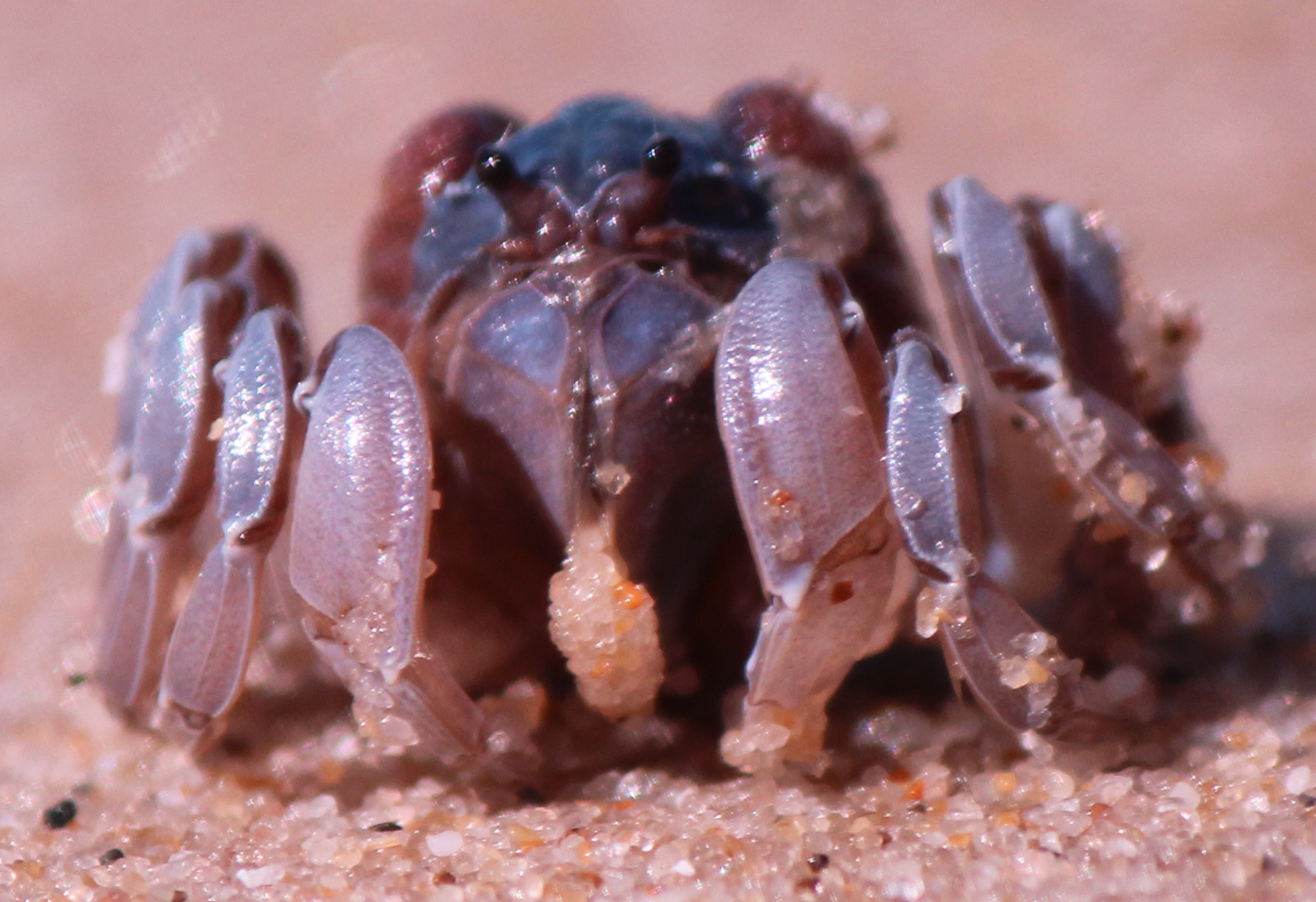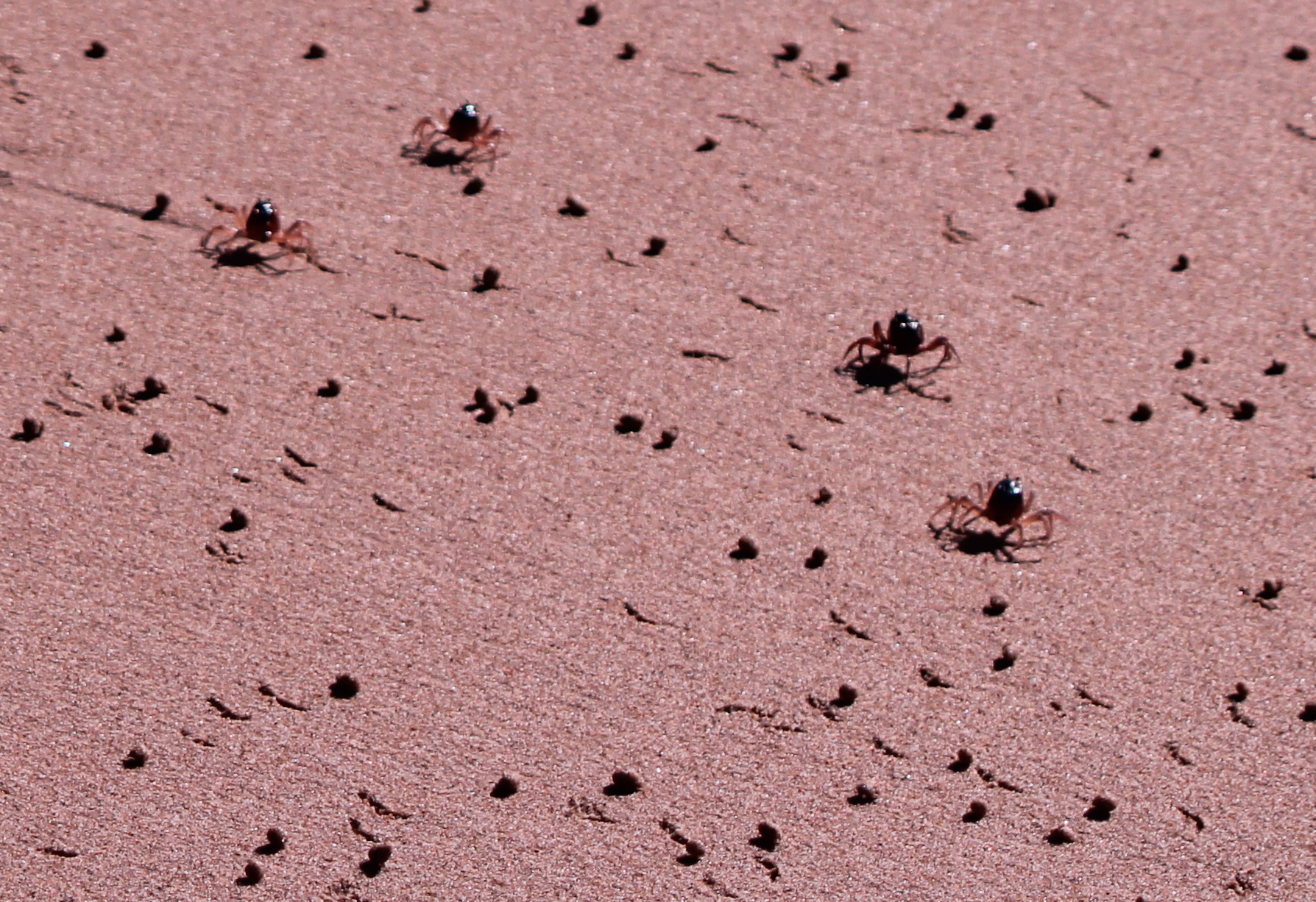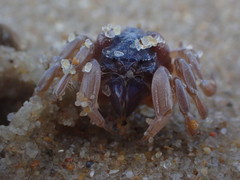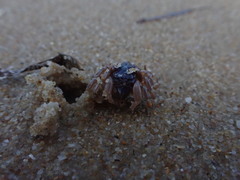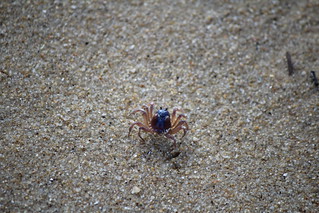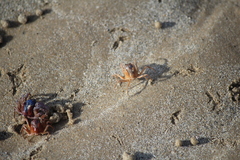Commonly seen at low tide moving in large groups across the sand as they feed and quickly burrowing into the sand when disturbed. It is this large colony or group movement that gives them their common name.
These crabs roll up balls of sand to feed on as they move along leaving the balls behind as they go. These balls are visible along the beaches once the crabs burrowed away to await the next high tide when they repeat this process over again.
How to identify Mictyris platycheles?
Adults of this crab are blues to grey in colour with a red to purple patch on each side light coloured legs and claws. The eyes are black on short stalks that are lighter in colour.
What habitats does Mictyris platycheles live in?
Can be found along intertidal beaches and mud flats at low tide
What is the distribution of Mictyris platycheles?
Eastern Australia including around Tasmania
How big does Mictyris platycheles grow?
Can grow to around 15mm across the carapace
Files & Downloads
Disclaimer: A lot of work goes into trying to identify and ensure accurate identifications are made and that the listed Descriptions, Sizes, Habitats and Distribution information is as accurate and valid as possible. Unfortunately, information in this arena is ever changing and as such no guarantee can be offered that it is correct or currently valid as a result the information is provided as a guide, and it is always suggested that you do a little research to ensure you have the latest and most accurate information. View the reference's or bibliography I welcome any feedback and comments on the information provided.

